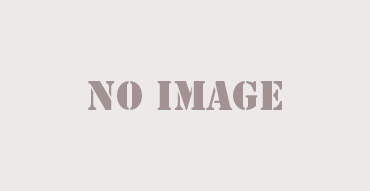However, there have been some positive trends, including decreased drinking among teenagers and the social media trend of “Dry January,” an indication that people are taking alcohol seriously. After Congress raised the drinking age to 21 and awareness of drunk driving deaths increased, drinking levels went down but started increasing again in the 1990s. Since then, drinking in the U.S. has fluctuated, with a high in the 1970s and 1980s, when the average American drank 2.75 gallons per year.
- We will always indicate the original source of the data in our documentation, so you should always check the license of any such third-party data before use and redistribution.
- Additionally, expect to see whiskey from Japan, Korea, Taiwan, and other up-and-coming producing countries such as Italy, Wales, Netherlands, and Singapore enter or become more prominent in the U.S. market.
- Explore topics related to alcohol misuse and treatment, underage drinking, the effects of alcohol on the human body, and more.
- Alcohol use disorder, which includes alcohol dependence, is defined in the WHO’s International Classification of Diseases (available here).
Americans who have worked for tips themselves are usually more likely to leave one
Their prominence is driven by consumers’ continual search for new and exciting products. “When we ask RTD consumers what factors influence their beverage alcohol purchase decision, the #1 response we hear is ‘flavor’,” says Rand. “People are eager to try new brands, especially those that offer a unique or interesting flavor. While this is particularly prevalent with RTDs, we’re also seeing significant growth in flavors in beer and spirits as well.”
Further reports
Decanter’s January 2022 “Top wine Trends for 2022” listed the average consumer’s “inability…to afford” wines from Burgundy, Bordeaux, and Champagne. Instead, there has been a shift to lesser-known regions, including Santa Barbara, California, the Canary Islands and Gredos in Spain, Corsica, Slovenia, and Switzerland. Overall, the theme is that consumers will start looking for new wines, new wine regions, and swapping Champagne with Cava and other sparkling wines. Regarding differences based on demographics, Gallup provided insight into what sun rock bud beverage U.S. adults aged 18 and older drank “most often” in 2021. The most important key figures provide you with a compact summary of the topic of “Alcoholic beverages industry in the United States” and take you straight to the corresponding statistics.
Changes in consumption
The ‘disease burden’ – measured in Disability-Adjusted Life Years (DALYs) – considers mortality and years lived with disability or health burden. The map shows DALYs per 100,000 people, which result from alcohol use disorders. The breakdown of alcohol use disorders by gender for any country can be viewed here; the majority of people with alcohol use disorders – around three-quarters – are male. It’s estimated that globally, around 1 percent of the population has an alcohol use disorder.
On the state level, it appears to be highest in New Hampshire and Delaware, and lowest in Utah. However, state-level consumption estimates can be affected by such factors as sales to people from neighboring states (especially when there are significant differences in alcohol tax rates) and alcohol consumption by tourists (think Nevada, Florida, and Washington, D.C.). The results in the chart show the increased risk of developing alcohol dependency (we show results for illicit drug dependency in our topic page on drug use) for someone with a given mental health disorder (relative to those without). For example, a value of 3.6 for bipolar disorder indicates that illicit drug dependency became more than three times more likely in individuals with bipolar disorder than those without.
A review of Gallup’s longer-term data confirm that White adults have been consistently more likely than Hispanic and Black adults to drink, while the rate among the last two groups has been statistically similar. Do you know how much money you’re spending on alcohol each week, month, or year? Use this calculator to figure out your average spending on alcohol per week, month, and year.
Experts say we should see more craft beers, including hazy IPAs, lower alcohol IPAs, lagers, sour beers, rose beers, and fresh hop beers. In an article published by WGSN, we should begin to see Chinese baijiu, a white spirit, “and the world’s most-consumed spirit, outselling whisky, vodka, gin, rum, and tequila combined,” become more prevalent. While rose wine has grown in popularity over the past few years, according to the Beverage Trade Network, the “excitement about and growth in the segment may be waning.” The net positive change for Cabernet Sauvignon and Red Blends was 26% and 33%, respectively, for men and 10% and 40% for women.


